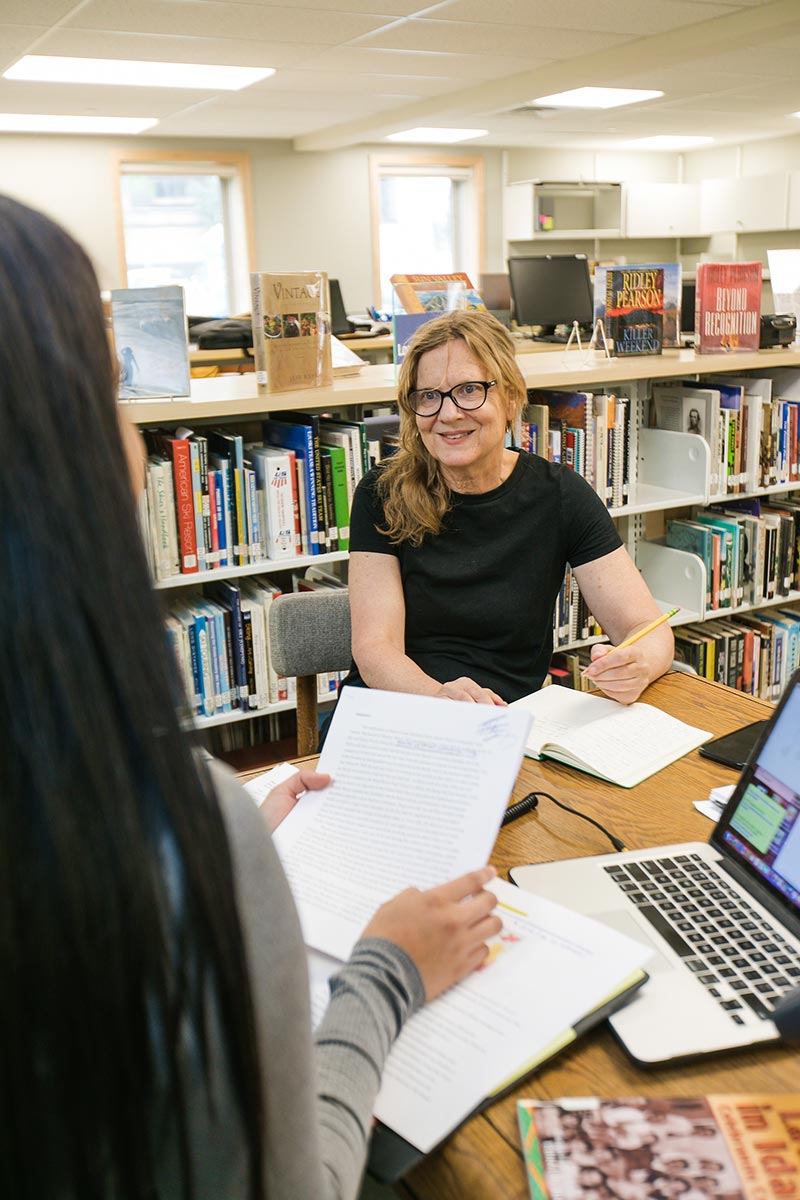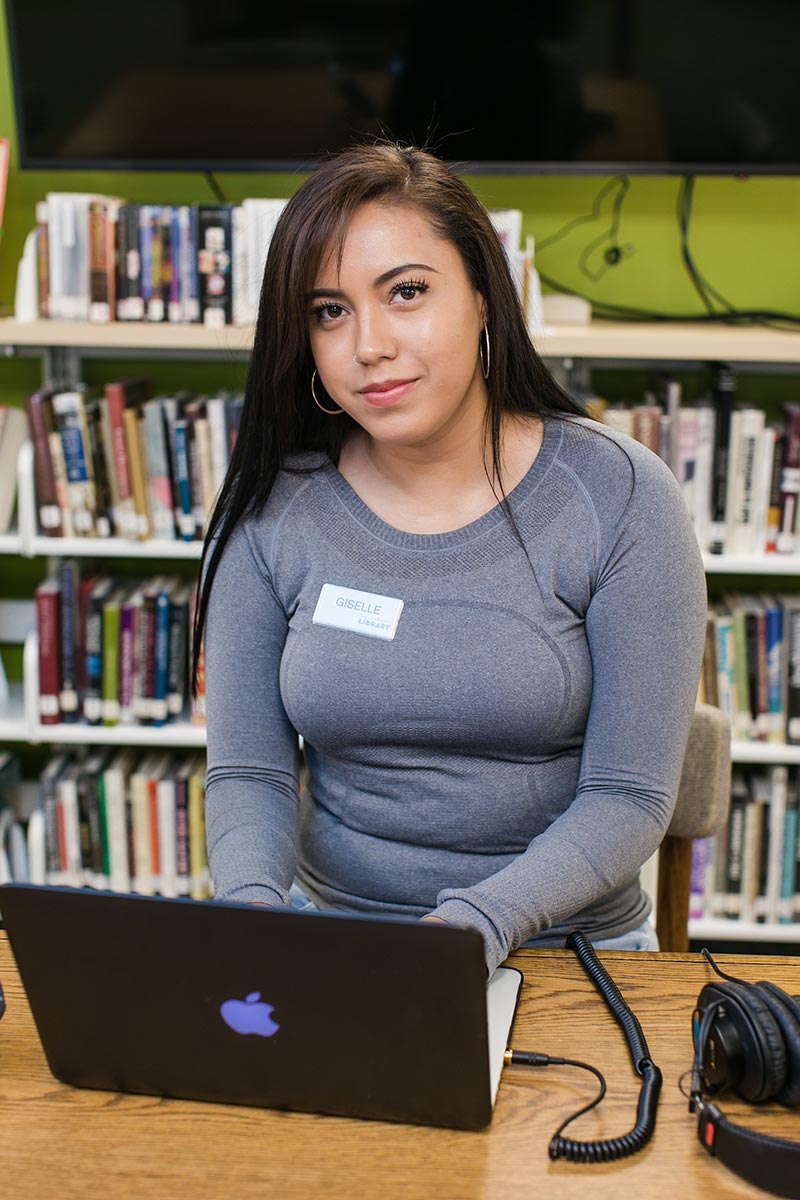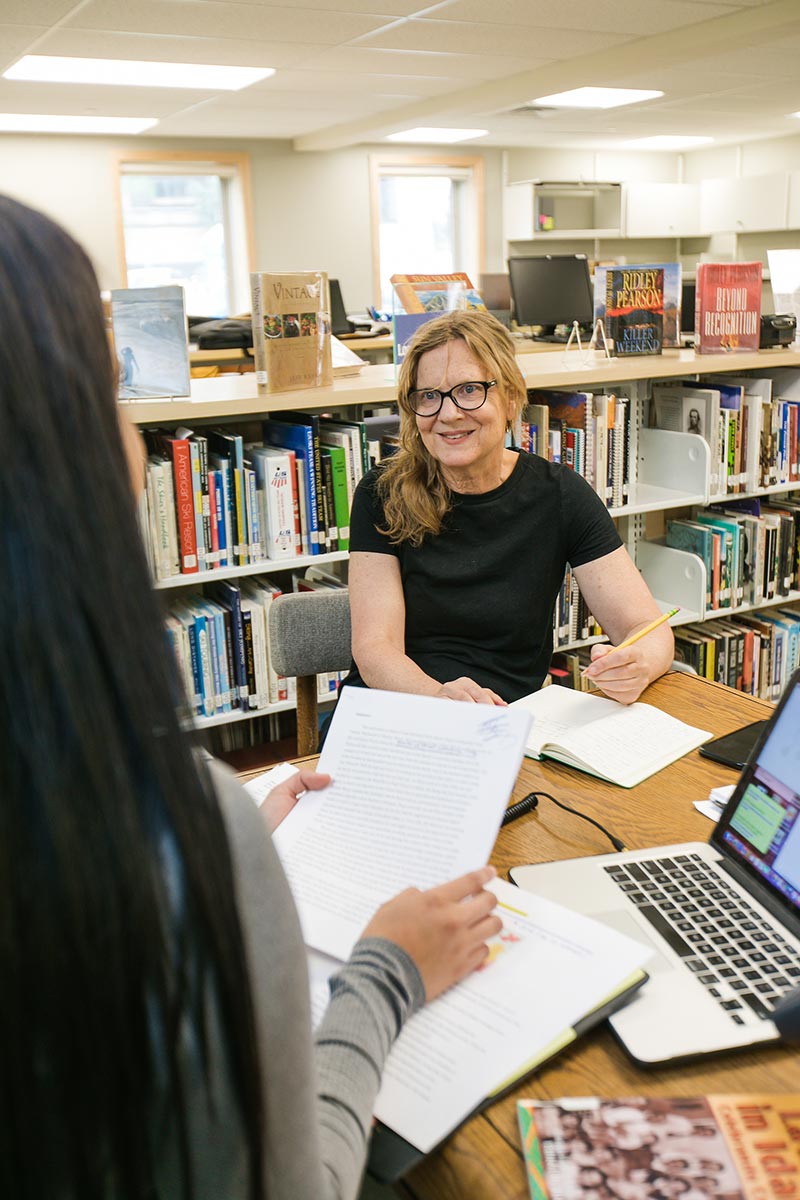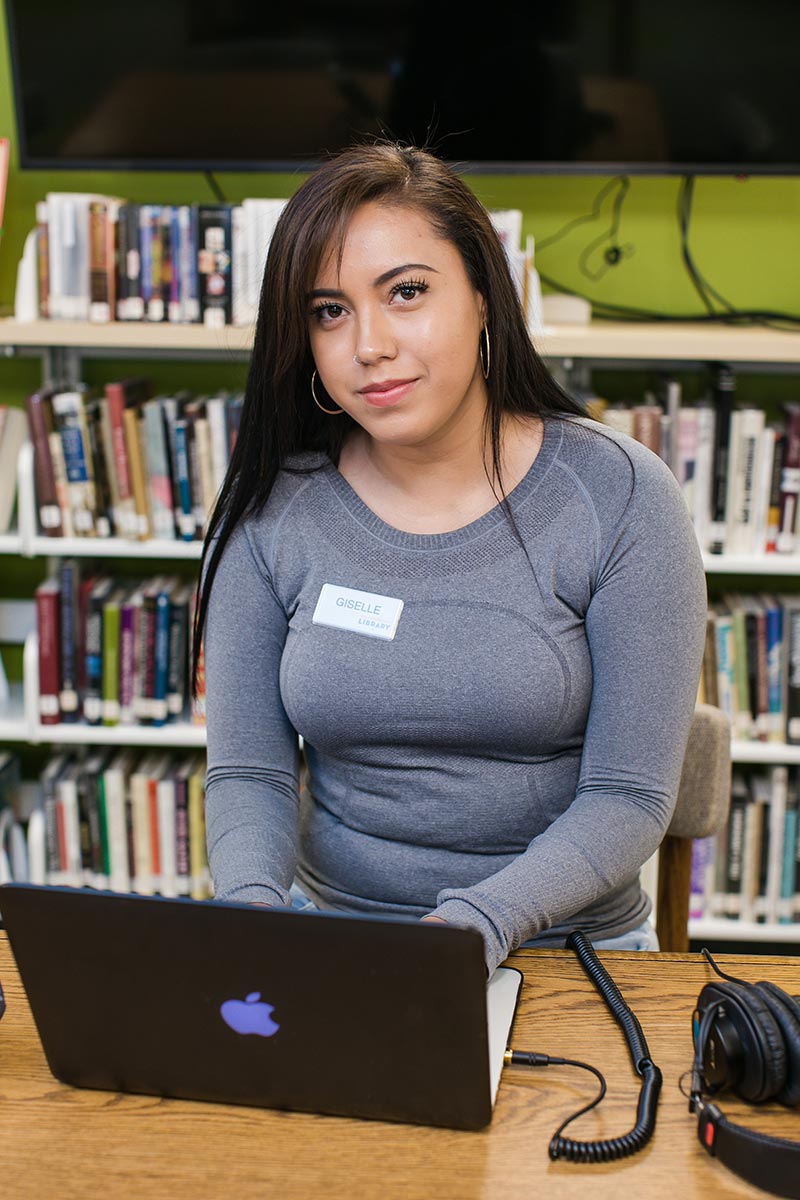Immigration is History
U of I student builds a library’s first Latino oral history archive through an internship and learns more about her family in the process
Imagine being the first person to document, translate and transcribe first-hand stories of Latino immigrants that settled in your hometown.
Now imagine hearing a tale about paying $100 to a Mexican coyote — the name given to those who help immigrants cross the border into the United States — to get you into the country, then walking an endless number of miles through the desert to eventually end up in California to begin a new life in the 1960s.
This is how University of Idaho senior Giselle Andrade spent three weeks in July 2019. Andrade completed a summer internship at The Community Library in Ketchum, the second such internship sponsored by the U of I Department of History.
A Strong Connection to History
At first glance, Andrade may not have seemed like the most likely candidate for this position. Although she is on track to graduate in spring 2020 with a double major in Spanish and elementary education with a Spanish endorsement, she doesn’t have much of a history background.
Still, she jumped at the chance to apply for the internship once she read about it advertised in the U of I Office of Multicultural Affairs.
For her project, Andrade immediately zeroed in on researching and creating oral histories related to immigration. Born in Los Angeles but raised in Idaho’s Wood River Valley, Andrade was drawn to the idea of gathering and telling the stories of those who settled in the area before her.
“This was an opportunity to research my roots … my background,” she said. “There is a strong connection to history. Teachers teach about history. Immigration is history. It’s important to know about immigration.”
Although her background was not that of the typical History department candidate, she brought a list of intangibles that impressed the selection committee.
“She offered a lot,” said Mary Tyson, director of regional history at the library. “She had Spanish language competence, she was from the area and she knew people she could interview. It was kind of fascinating to open up this door in a less traditional way.”
Andrade’s ability to speak and translate Spanish gave her a huge advantage in recording oral histories that might otherwise be lost.
“Stories like these are usually very private,” she said. “(Subjects) feel more comfortable telling these stories in Spanish. Immigration is a very touchy subject with everything that’s going on now.”

About the Internship:
- What: Partnership between The Community Library in Ketchum and the University of Idaho Department of History
- Began: 2017
- Time: Three-week commitment during the summer
- Project: Intern completes regional history project related to historical photographs, museum objects or oral histories
- Pay: $3,000 stipend to assist with lodging, food and travel costs
- Deadline: Applications are due in February
- More information: Matthew Fox-Amato
Representing Latinos in the Wood River Valley
Approximately 30% of the Wood River Valley population is Latino, Tyson said, but there was a big hole in the library’s oral history catalog that addressed the stories of how these immigrants came to the area. That made Andrade’s proposal all the more exciting.
Andrade focused on stories of Latinos from the Mexican state of Michoacán who settled in the area. According to Andrade, a large percentage of the Wood River Valley’s Latino population came from Michoacán, including several members of her family. Her focus was to find out reasons why these immigrants chose the area surrounding Blaine County.
But one of the interviews would also reveal a family secret.
A Family History Revealed
The story she heard about the man paying a coyote $100 to have help crossing the border almost 60 years ago? That was her grandfather. And this was the first time Andrade heard it.
When he was a young man, Andrade’s grandfather and his father used to cross the border regularly with work visas. They went to California for seasonal work but would then have to return once the work was done.
At age 20, he decided to stay in the U.S. so he could work permanently and send money back to his family in Mexico. After crossing the border, he first went back to California but eventually ended up in Sun Valley. He was told about opportunities in Idaho through a family member who had previously settled in the area.
“He wanted a better life and to give his children a better life,” she said. “If I wouldn’t have documented his story, no one would have ever known. He would have been just another stereotype.”
It’s a stereotype that Andrade feels compelled to dismiss.
“I wanted to prove that not everyone comes in to ruin things,” she said. “These people, like my grandfather, came to the U.S. and worked jobs that a lot of people wouldn’t do.”
Thanks to Andrade’s research, she was able to document that people have immigrated to Idaho because of work opportunities and to build lives they were unable to realize in Mexico. That’s what she wants people to think of when they hear the term immigrants.

Building a Future Resource
After graduation, Andrade’s goal is to teach elementary school in the Los Angeles area, possibly while working toward her master’s degree through assistance programs like Teach For America.
But first, Andrade and Tyson are planning to talk about additional work that has stemmed from Andrade’s research, such as the possibility of more interviews and expanding how the information can be experienced.
Although the written transcripts of these interviews are available in the library, Tyson envisions creating a museum-type exhibit where patrons could use an app such as SoundCloud to listen to them.
For right now, however, Tyson is thrilled at what Andrade was able to accomplish.
“We did not have a single oral interview with someone of Spanish descent in our collection,” she said. “This was a huge gap in our collection. What she did was really graduate-level type work.”
Article by David Jackson
Photography by Cheatwood Photography, Ketchum
Published in August 2019.








